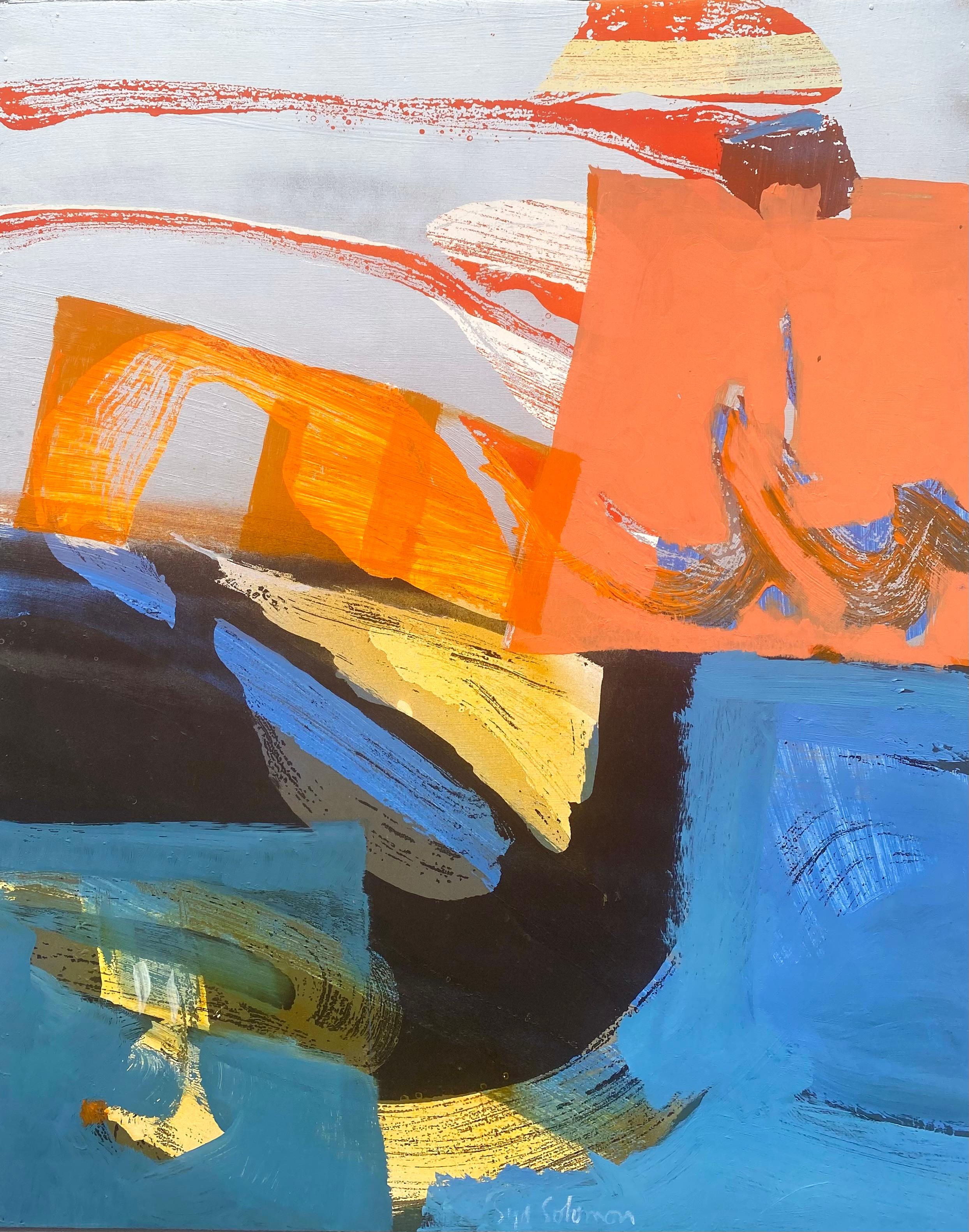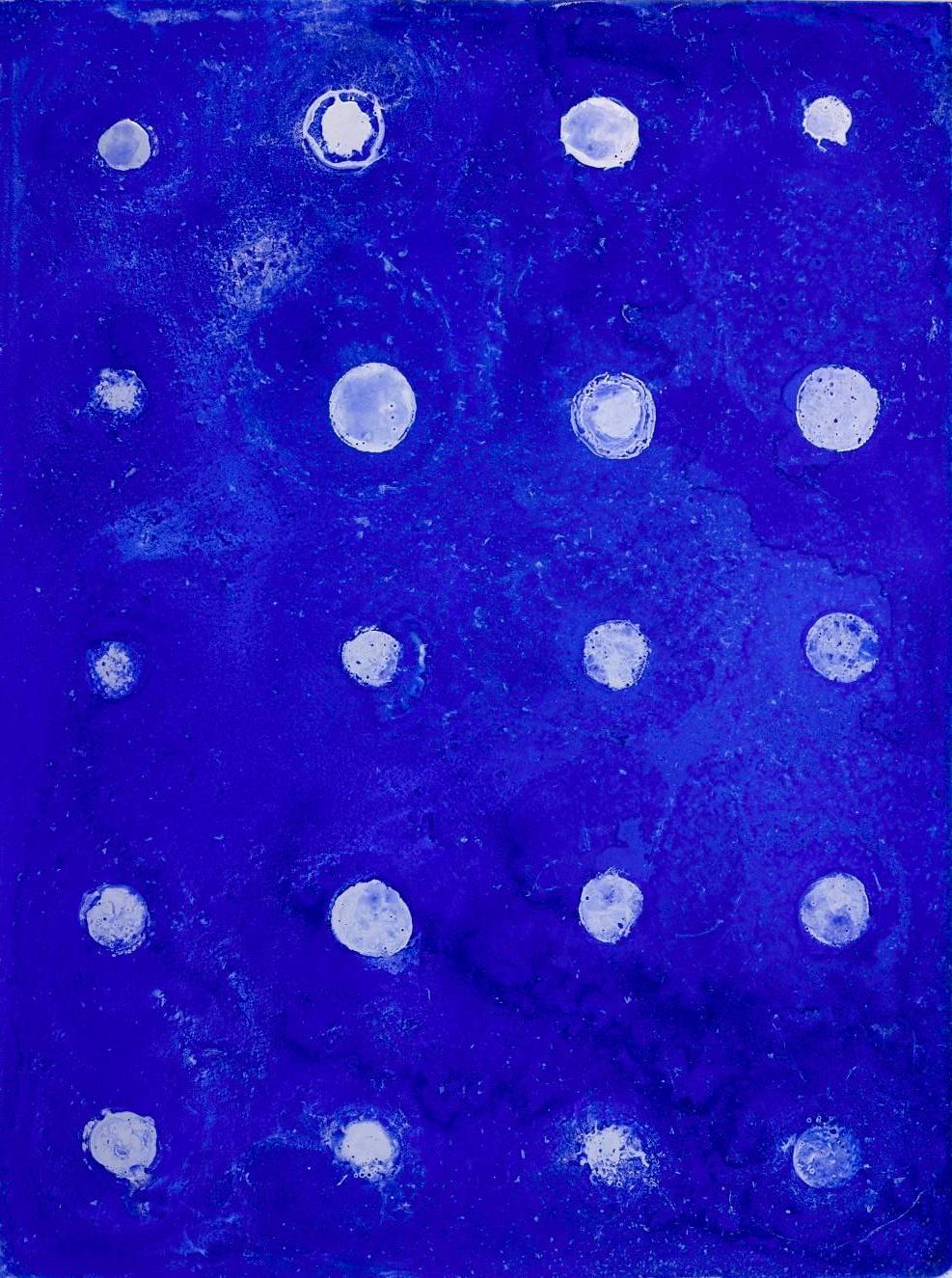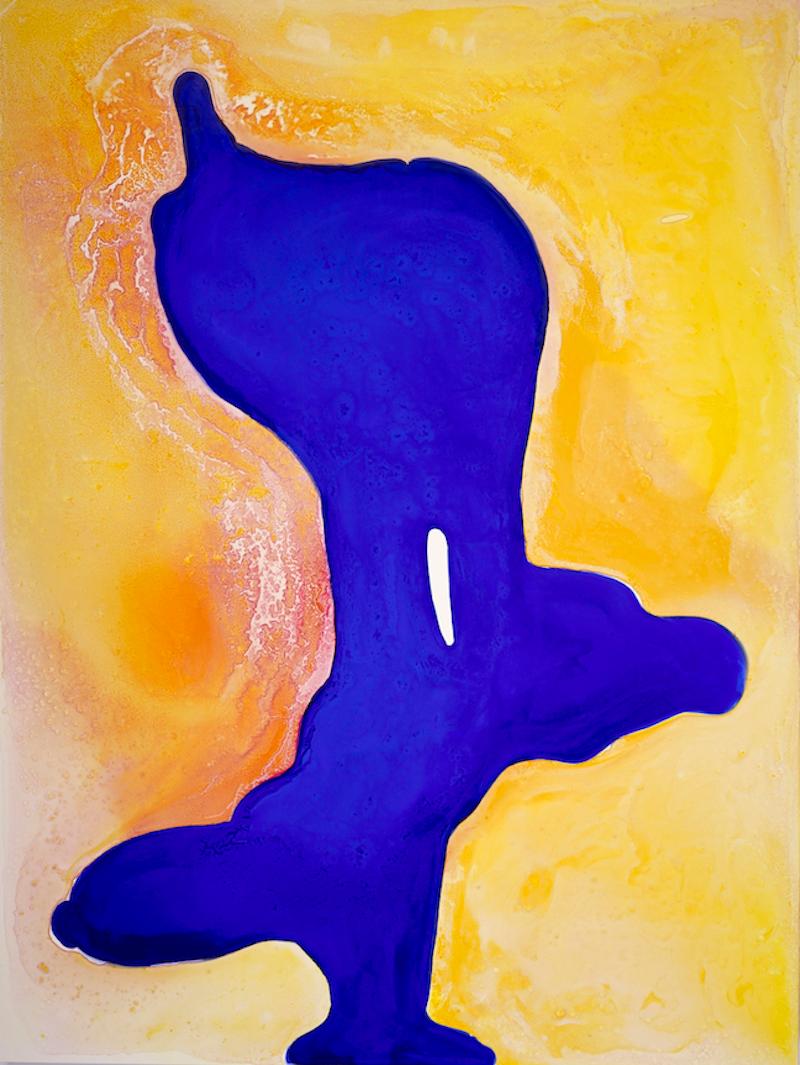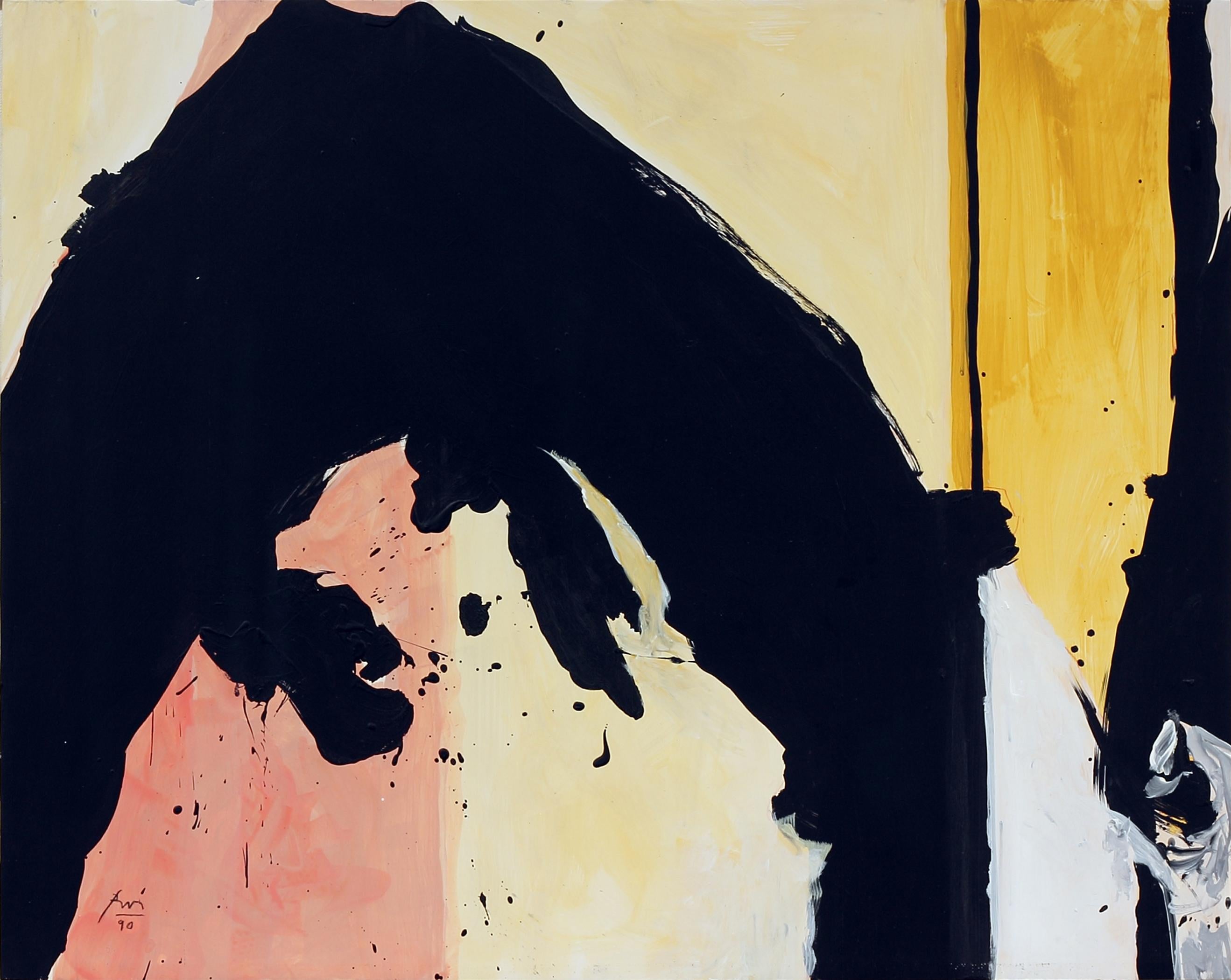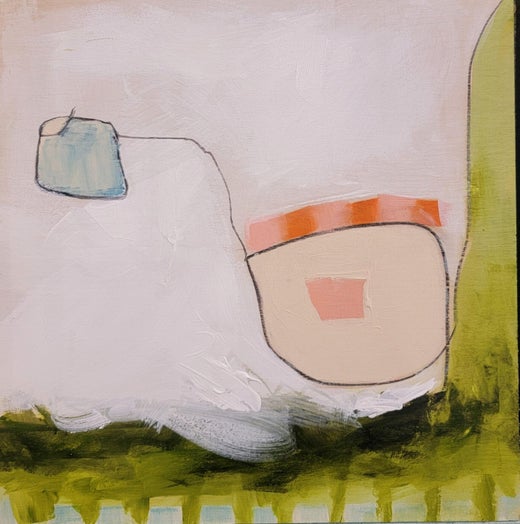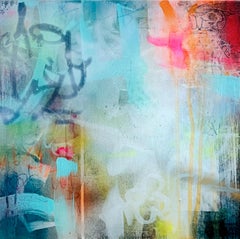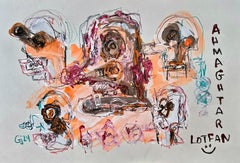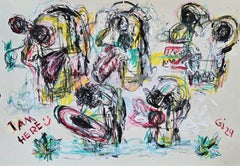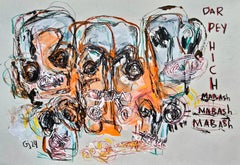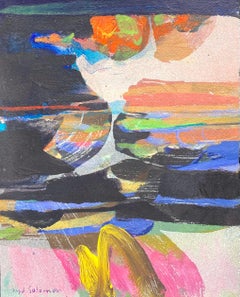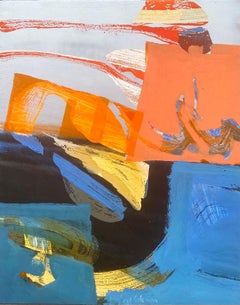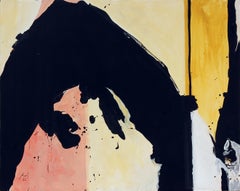Items Similar to The Gathering Shine (~55% OFF LIST PRICE - LIMITED TIME ONLY!)
Want more images or videos?
Request additional images or videos from the seller
1 of 5
Jennifer Bricker-PughThe Gathering Shine (~55% OFF LIST PRICE - LIMITED TIME ONLY!)2022
2022
On Hold
$1,755
$3,90055% Off
On Hold
£1,323.74
£2,941.6655% Off
On Hold
€1,526.80
€3,392.9055% Off
On Hold
CA$2,477.23
CA$5,504.9655% Off
On Hold
A$2,756.95
A$6,126.5755% Off
On Hold
CHF 1,435.34
CHF 3,189.6455% Off
On Hold
MX$33,293.17
MX$73,984.8355% Off
On Hold
NOK 18,000.44
NOK 40,000.9855% Off
On Hold
SEK 17,002.55
SEK 37,783.4455% Off
On Hold
DKK 11,401.15
DKK 25,335.8855% Off
About the Item
Jennifer Bricker-Pugh
The Gathering Shine
Acrylic on Panel
Year: 2022
Size: 36x24x1.5in
Signed, dated and inscribed by hand
COA provided
Ready to hang
Ref.: 924802-1079
Jennifer is an Abstract Expressionist painter known for her vibrant and ethereal work. With the use of bright, bold color, line work and references to nature, she paints pieces that allow her to share stories largely inspired by her surroundings. Her work embodies a playful yet thought provoking quality that makes the viewer want to know and see more. She finds it important to create work that allows the audience to explore each piece and create their own narrative and story based on her imagery.
Bricker-Pugh about this body of work: "When color and line meet, the story begins.
Marigold is a collection of short stories that connect my intuitive gestural movements with the rhythm of the natural world and the melodic charm of music.
The warm and playful color palette creates a synergy of soft and vibrant hues that is intended to delight the eyes of the viewer and allow them to escape into a brilliant glow that is Marigold."
- Creator:Jennifer Bricker-Pugh (American)
- Creation Year:2022
- Dimensions:Height: 36 in (91.44 cm)Width: 24 in (60.96 cm)Depth: 1.5 in (3.81 cm)
- Medium:
- Movement & Style:
- Period:
- Condition:
- Gallery Location:Kansas City, MO
- Reference Number:Seller: 924802-10791stDibs: LU608311076132
Jennifer is an Abstract Expressionist painter known for her vibrant and ethereal work. With the use of bright, bold color, line work and references to nature, she paints pieces that allow her to share stories largely inspired by her surroundings. Her work embodies a playful yet thought provoking quality that makes the viewer want to know and see more. She finds it important to create work that allows the audience to explore each piece and create their own narrative and story based on her imagery. Bricker-Pugh about this body of work: "When color and line meet, the story begins. Marigold is a collection of short stories that connect my intuitive gestural movements with the rhythm of the natural world and the melodic charm of music. The warm and playful color palette creates a synergy of soft and vibrant hues that is intended to delight the eyes of the viewer and allow them to escape into a brilliant glow that is Marigold."
About the Seller
5.0
Platinum Seller
Premium sellers with a 4.7+ rating and 24-hour response times
Established in 2016
1stDibs seller since 2017
1,101 sales on 1stDibs
Typical response time: <1 hour
- ShippingRetrieving quote...Shipping from: Kansas City, MO
- Return Policy
Authenticity Guarantee
In the unlikely event there’s an issue with an item’s authenticity, contact us within 1 year for a full refund. DetailsMoney-Back Guarantee
If your item is not as described, is damaged in transit, or does not arrive, contact us within 7 days for a full refund. Details24-Hour Cancellation
You have a 24-hour grace period in which to reconsider your purchase, with no questions asked.Vetted Professional Sellers
Our world-class sellers must adhere to strict standards for service and quality, maintaining the integrity of our listings.Price-Match Guarantee
If you find that a seller listed the same item for a lower price elsewhere, we’ll match it.Trusted Global Delivery
Our best-in-class carrier network provides specialized shipping options worldwide, including custom delivery.More From This Seller
View AllDay Dream No. 7 (Abstract, Atmospheric, Blush, Contemporary, Gestural, Graffiti)
Located in Kansas City, MO
Katrina Revenaugh
Day Dream No. 7
Archival Pigment Ink, Acrylic and Spray Paint on Birch Panel
Year: 2020
Size: 12×12in
Signed: On Verso
COA provided
Ref.: 924802-1939
*on Birch Pa...
Category
2010s Abstract Expressionist Abstract Paintings
Materials
Birch, Archival Ink, Spray Paint, Acrylic, Panel
Saint Minecraft XXXI (Gestural Abstract, Portrait, Persian Artist, 20% OFF)
Located in Kansas City, MO
Golfam Jozdani
Saint Minecraft XXXI
Mixed Media on Cardboard; Acrylic, Pencil, Colored Pencil
Size: 9.44 x 14.17 inches (24 x 36 cm)
Signed and dated by hand
COA provided
*Framing O...
Category
2010s Abstract Expressionist Figurative Paintings
Materials
Acrylic, Cardboard, Pencil, Color Pencil
Saint Minecraft XXIX (Gestural Abstract, Portrait, Persian Artist, 20% OFF)
Located in Kansas City, MO
Golfam Jozdani
Saint Minecraft XXIX
Mixed Media on Cardboard; Acrylic, Pencil, Colored Pencil
Size: 9.44 x 14.17 inches (24 x 36 cm)
Signed and dated by hand
COA provided
*Framing O...
Category
2010s Abstract Expressionist Figurative Paintings
Materials
Acrylic, Cardboard, Pencil, Color Pencil
Saint Minecraft XXX (Gestural Abstract, Portrait, Persian Artist, 20% OFF)
Located in Kansas City, MO
Golfam Jozdani
Saint Minecraft XXX
Mixed Media on Cardboard; Acrylic, Pencil, Colored Pencil
Size: 9.44 x 14.17 inches (24 x 36 cm)
Signed and dated by hand
COA provided
*Framing Op...
Category
2010s Abstract Expressionist Figurative Paintings
Materials
Acrylic, Cardboard, Pencil, Color Pencil
Retracing Steps
By Katherine Bello
Located in Kansas City, MO
Katherine Bello
Title: Retracing Steps
Medium: mixed media on canvas
Year: 2020
Size: 36" x 24" x 1.5"
Signed, dated and inscribed by hand
COA provided (issued by representing gallery)
Katherine Bello's aim as an artist is to capture a sense of place, a moment of time, or a feeling - to evoke a sense of wonder. Bello loves paint and paint brushes; bold, gestural mark-making and the interplay of color. She is influenced by light and landscape, poetry, history and science. Formerly educated in Chemical Engineering and Interior Design, Bello is drawn to the process of creating Something out of Nothing.
Abstract, sbstract art...
Category
2010s Abstract Expressionist Paintings
Materials
Canvas, Varnish, Oil Crayon, Acrylic
Time to Begin...Again
Located in Kansas City, MO
Jennifer Bricker-Pugh
Time to Begin...Again
Materials: Mixed Media on Canvas
Date: 2018
Dimensions : 30"x1.5"x36"
Signed by hand
COA provided
Description: In my opinion, color is an ...
Category
2010s Abstract Expressionist Abstract Paintings
Materials
Canvas, Mixed Media, Oil, Acrylic
Price Upon Request
You May Also Like
“Stratawind”
By Syd Solomon
Located in Southampton, NY
Original oil paint and acrylic paint on wooden panel by the well known American artist, Syd Solomon. Signed lower left. Signed, titled and dated 1971 verso . Condition is very good. No restorations. Original frame. Overall framed measurements are 17 by 14 inches. Partial Saidenberg Gallery, New York City label verso. Provenance: A Long Island, New York collector.
American, 1917-2004
SYD SOLOMON BIOGRAPHY:
Written by Dr. Lisa Peters/Berry Campbell Gallery
Syd Solomon was born near Uniontown, Pennsylvania, in 1917. He began painting in high school in Wilkes-Barre, where he was also a star football player. After high school, he worked in advertising and took classes at the Art Institute of Chicago. Before the attack on Pearl Harbor, he joined the war effort and was assigned to the First Camouflage Battalion, the 924th Engineer Aviation Regiment of the US Army. He used his artistic skills to create camouflage instruction manuals utilized throughout the Army. He married Ann Francine Cohen in late 1941. Soon thereafter, in early 1942, the couple moved to Fort Ord in California where he was sent to camouflage the coast to protect it from possible aerial bombings. Sent overseas in 1943, Solomon did aerial reconnaissance over Holland. Solomon was sent to Normandy early in the invasion where his camouflage designs provided protective concealment for the transport of supplies for men who had broken through the enemy line. Solomon was considered one of the best camoufleurs in the Army, receiving among other commendations, five bronze stars. Solomon often remarked that his camouflage experience during World War II influenced his ideas about abstract art. At the end of the War, he attended the École des Beaux-Arts in Paris.
Because Solomon suffered frostbite during the Battle of the Bulge, he could not live in cold climates, so he and Annie chose to settle in Sarasota, Florida, after the War. Sarasota was home to the John and Mable Ringling Museum of Art, and soon Solomon became friends with Arthur Everett “Chick” Austin, Jr., the museum’s first Director. In the late 1940s, Solomon experimented with new synthetic media, the precursors to acrylic paints provided to him by chemist Guy Pascal, who was developing them. Victor D’Amico, the first Director of Education for the Museum of Modern Art, recognized Solomon as the first artist to use acrylic paint. His early experimentation with this medium as well as other media put him at the forefront of technical innovations in his generation. He was also one of the first artists to use aerosol sprays and combined them with resists, an innovation influenced by his camouflage experience.
Solomon’s work began to be acknowledged nationally in 1952. He was included in American Watercolors, Drawings and Prints at the Metropolitan Museum of Art, New York. From 1952–1962, Solomon’s work was discovered by the cognoscenti of the art world, including the Museum of Modern Art Curators, Dorothy C. Miller and Peter Selz, and the Whitney Museum of American Art’s Director, John I. H. Baur. He had his first solo show in New York at the Associated American Artists Gallery in 1955 with “Chick” Austin, Jr. writing the essay for the exhibition. In the summer of 1955, the Solomons visited East Hampton, New York, for the first time at the invitation of fellow artist David Budd. There, Solomon met and befriended many of the artists of the New York School, including Jackson Pollock, Franz Kline, Willem de Kooning, James Brooks, Alfonso Ossorio, and Conrad Marca-Relli. By 1959, and for the next thirty-five years, the Solomons split the year between Sarasota (in the winter and spring) and the Hamptons (in the summer and fall).
In 1959, Solomon began showing regularly in New York City at the Saidenberg Gallery with collector Joseph Hirshhorn buying three paintings from Solomon’s first show. At the same time, his works entered the collections of the Whitney Museum of American Art, the Solomon R. Guggenheim Museum, and the Wadsworth Athenaeum in Hartford, Connecticut, among others. Solomon also began showing at Signa Gallery in East Hampton and at the James David Gallery in Miami run by the renowned art dealer, Dorothy Blau.
In 1961, the Guggenheim Museum’s H. H. Arnason bestowed to him the Silvermine Award at the 13th New England Annual. Additionally, Thomas Hess of ARTnews magazine chose Solomon as one of the ten outstanding painters of the year. At the suggestion of Alfred H. Barr, Jr., the Museum of Modern Art’s Director, the John and Mable Ringling Museum in Sarasota began its contemporary collection by purchasing Solomon’s painting, Silent World, 1961.
Solomon became influential in the Hamptons and in Florida during the 1960s. In late 1964, he created the Institute of Fine Art at the New College in Sarasota. He is credited with bringing many nationally known artists to Florida to teach, including Larry Rivers, Philip Guston, James Brooks, and Conrad Marca-Relli. Later Jimmy Ernst, John Chamberlain, James Rosenquist, and Robert Rauschenberg settled near Solomon in Florida. In East Hampton, the Solomon home was the epicenter of artists and writers who spent time in the Hamptons, including Alfred Leslie, Jim Dine, Ibram Lassaw, Saul Bellow, Barney Rosset, Arthur Kopit, and Harold Rosenberg.
In 1970, Solomon, along with architect Gene Leedy, one of the founders of the Sarasota School of Architecture, built an award-winning precast concrete and glass house and studio on the Gulf of Mexico near Midnight Pass in Sarasota. Because of its siting, it functioned much like Monet’s home in Giverny, France. Open to the sky, sea, and shore with inside and outside studios, Solomon was able to fully solicit all the environmental forces that influenced his work. His friend, the art critic Harold Rosenberg, said Solomon’s best work was produced in the period he lived on the beach.
During 1974 and 1975, a retrospective exhibition of Solomon’s work was held at the New York Cultural Center and traveled to the John and Mable Ringling Museum in Sarasota. Writer Kurt Vonnegut, Jr. conducted an important interview with Solomon for the exhibition catalogue. The artist was close to many writers, including Harold Rosenberg, Joy Williams, John D. McDonald, Budd Schulberg, Elia Kazan, Betty Friedan...
Category
1970s Abstract Expressionist Abstract Paintings
Materials
Oil, Acrylic, Wood Panel
“Seagame”
By Syd Solomon
Located in Southampton, NY
0riginal acrylic on panel painting by the well known American artist, Syd Solomon. Signed Syd Solomon lower center. Signed and dated Syd Solomon 1971 and inscribed as titled on the reverse. 30 × 24 inches. Condition is very good, no issues. The painting is framed in its original wood with silver reveal floating frame. Overall framed measurements are 32.5 by 26.75 inches. Provenance: A private collector.
American, 1917-2004
SYD SOLOMON BIOGRAPHY:
Written by Dr. Lisa Peters/Berry Campbell Gallery
Syd Solomon was born near Uniontown, Pennsylvania, in 1917. He began painting in high school in Wilkes-Barre, where he was also a star football player. After high school, he worked in advertising and took classes at the Art Institute of Chicago. Before the attack on Pearl Harbor, he joined the war effort and was assigned to the First Camouflage Battalion, the 924th Engineer Aviation Regiment of the US Army. He used his artistic skills to create camouflage instruction manuals utilized throughout the Army. He married Ann Francine Cohen in late 1941. Soon thereafter, in early 1942, the couple moved to Fort Ord in California where he was sent to camouflage the coast to protect it from possible aerial bombings. Sent overseas in 1943, Solomon did aerial reconnaissance over Holland. Solomon was sent to Normandy early in the invasion where his camouflage designs provided protective concealment for the transport of supplies for men who had broken through the enemy line. Solomon was considered one of the best camoufleurs in the Army, receiving among other commendations, five bronze stars. Solomon often remarked that his camouflage experience during World War II influenced his ideas about abstract art. At the end of the War, he attended the École des Beaux-Arts in Paris.
Because Solomon suffered frostbite during the Battle of the Bulge, he could not live in cold climates, so he and Annie chose to settle in Sarasota, Florida, after the War. Sarasota was home to the John and Mable Ringling Museum of Art, and soon Solomon became friends with Arthur Everett “Chick” Austin, Jr., the museum’s first Director. In the late 1940s, Solomon experimented with new synthetic media, the precursors to acrylic paints provided to him by chemist Guy Pascal, who was developing them. Victor D’Amico, the first Director of Education for the Museum of Modern Art, recognized Solomon as the first artist to use acrylic paint. His early experimentation with this medium as well as other media put him at the forefront of technical innovations in his generation. He was also one of the first artists to use aerosol sprays and combined them with resists, an innovation influenced by his camouflage experience.
Solomon’s work began to be acknowledged nationally in 1952. He was included in American Watercolors, Drawings and Prints at the Metropolitan Museum of Art, New York. From 1952–1962, Solomon’s work was discovered by the cognoscenti of the art world, including the Museum of Modern Art Curators, Dorothy C. Miller and Peter Selz, and the Whitney Museum of American Art’s Director, John I. H. Baur. He had his first solo show in New York at the Associated American Artists Gallery in 1955 with “Chick” Austin, Jr. writing the essay for the exhibition. In the summer of 1955, the Solomons visited East Hampton, New York, for the first time at the invitation of fellow artist David Budd. There, Solomon met and befriended many of the artists of the New York School, including Jackson Pollock, Franz Kline, Willem de Kooning, James Brooks, Alfonso Ossorio, and Conrad Marca-Relli. By 1959, and for the next thirty-five years, the Solomons split the year between Sarasota (in the winter and spring) and the Hamptons (in the summer and fall).
In 1959, Solomon began showing regularly in New York City at the Saidenberg Gallery with collector Joseph Hirshhorn buying three paintings from Solomon’s first show. At the same time, his works entered the collections of the Whitney Museum of American Art, the Solomon R. Guggenheim Museum, and the Wadsworth Athenaeum in Hartford, Connecticut, among others. Solomon also began showing at Signa Gallery in East Hampton and at the James David Gallery in Miami run by the renowned art dealer, Dorothy Blau.
In 1961, the Guggenheim Museum’s H. H. Arnason bestowed to him the Silvermine Award at the 13th New England Annual. Additionally, Thomas Hess of ARTnews magazine chose Solomon as one of the ten outstanding painters of the year. At the suggestion of Alfred H. Barr, Jr., the Museum of Modern Art’s Director, the John and Mable Ringling Museum in Sarasota began its contemporary collection by purchasing Solomon’s painting, Silent World, 1961.
Solomon became influential in the Hamptons and in Florida during the 1960s. In late 1964, he created the Institute of Fine Art at the New College in Sarasota. He is credited with bringing many nationally known artists to Florida to teach, including Larry Rivers, Philip Guston, James Brooks, and Conrad Marca-Relli. Later Jimmy Ernst, John Chamberlain, James Rosenquist, and Robert Rauschenberg settled near Solomon in Florida. In East Hampton, the Solomon home was the epicenter of artists and writers who spent time in the Hamptons, including Alfred Leslie, Jim Dine, Ibram Lassaw, Saul Bellow, Barney Rosset, Arthur Kopit, and Harold Rosenberg.
In 1970, Solomon, along with architect Gene Leedy, one of the founders of the Sarasota School of Architecture, built an award-winning precast concrete and glass house and studio on the Gulf of Mexico near Midnight Pass in Sarasota. Because of its siting, it functioned much like Monet’s home in Giverny, France. Open to the sky, sea, and shore with inside and outside studios, Solomon was able to fully solicit all the environmental forces that influenced his work. His friend, the art critic Harold Rosenberg, said Solomon’s best work was produced in the period he lived on the beach.
During 1974 and 1975, a retrospective exhibition of Solomon’s work was held at the New York Cultural Center and traveled to the John and Mable Ringling Museum in Sarasota. Writer Kurt Vonnegut, Jr. conducted an important interview with Solomon for the exhibition catalogue. The artist was close to many writers, including Harold Rosenberg, Joy Williams, John D. McDonald, Budd Schulberg, Elia Kazan, Betty Friedan...
Category
1970s Abstract Expressionist Abstract Paintings
Materials
Panel, Acrylic
$21,000
Untitled
By Robert Motherwell
Located in London, GB
Robert Motherwell (1915-1991)
Untitled
1990
Acrylic and coloured pencil on panel
40.6 x 50.8 cms (16 x 20 ins)
RM13143
P1195
The composition of this painting is based on the left ...
Category
1990s Abstract Expressionist Abstract Paintings
Materials
Acrylic, Panel, Color Pencil
Price Upon Request
Becoming #8, Series: The Cut Line Abstractions, Acrylic on Panel Painting, 2013
By Michael Batty
Located in Orange, CA
Becoming #8, Series: The Cut Line Abstractions, Acrylic on Panel Painting, 2013
Additional information:
Medium: Acrylic on Panel
Dimensions: 36 x 36 in
Michael Batty (Canadian, bor...
Category
21st Century and Contemporary Abstract Expressionist Abstract Paintings
Materials
Acrylic, Panel
Transformation No. 8
By Rocky Hawkins
Located in Bozeman, MT
Enthralled with the lore and spirituality of American Indian cultures, his work often depicts these traditional subjects in nontraditional ways. Hawkins captures the raw sense of ele...
Category
2010s Abstract Expressionist Abstract Paintings
Materials
Mixed Media, Oil, Acrylic, Wood Panel
Shine in Silence
By Rocky Hawkins
Located in Bozeman, MT
Enthralled with the lore and spirituality of American Indian cultures, his work often depicts these traditional subjects in nontraditional ways. Hawkins captures the raw sense of ele...
Category
2010s Abstract Expressionist Abstract Paintings
Materials
Mixed Media, Oil, Acrylic, Wood Panel
More Ways To Browse
Marigold Painting
Madrid Spain Painting
Hamptons Painting
Red And Gold Abstract
Dollar Art
The Hamptons Paintings
Neutral Texture Art
Austin Texas
Pink Green Abstract Painting
Cincinnati Art
San Francisco Bay Area
Mid Century Expressionist Art
Music Wall Art
Israeli Oil Painting
Round Canvas
Santa Fe Gallery
Diptych Paintings
Monochrome Painting

